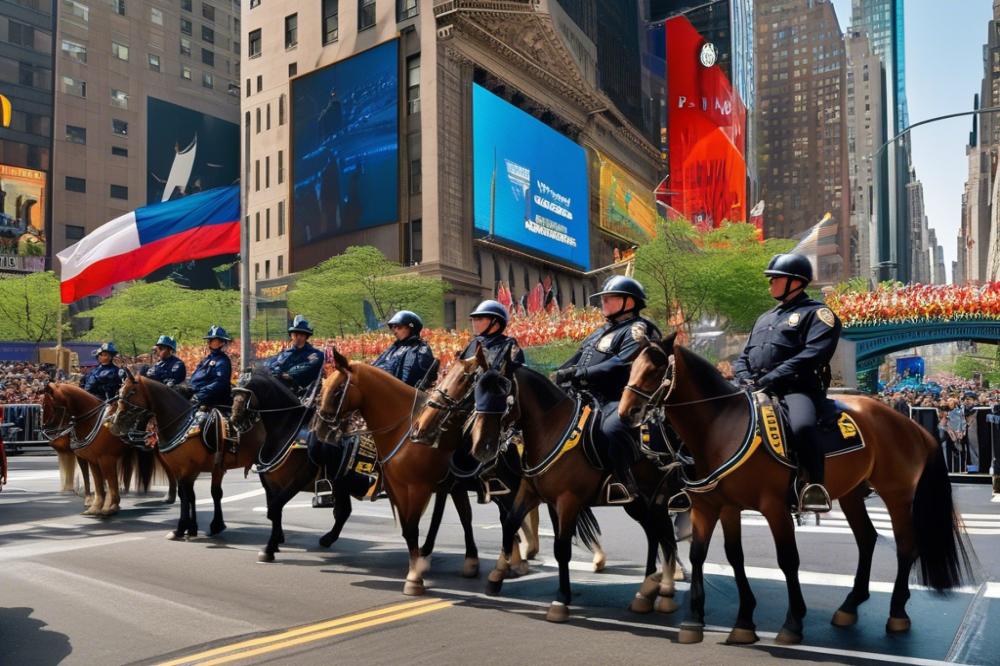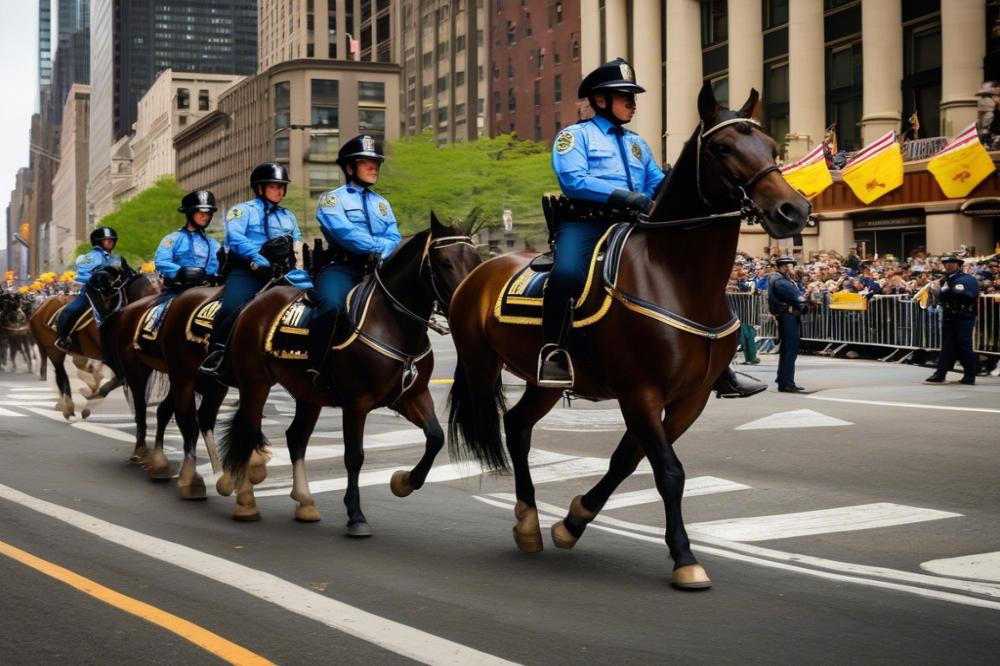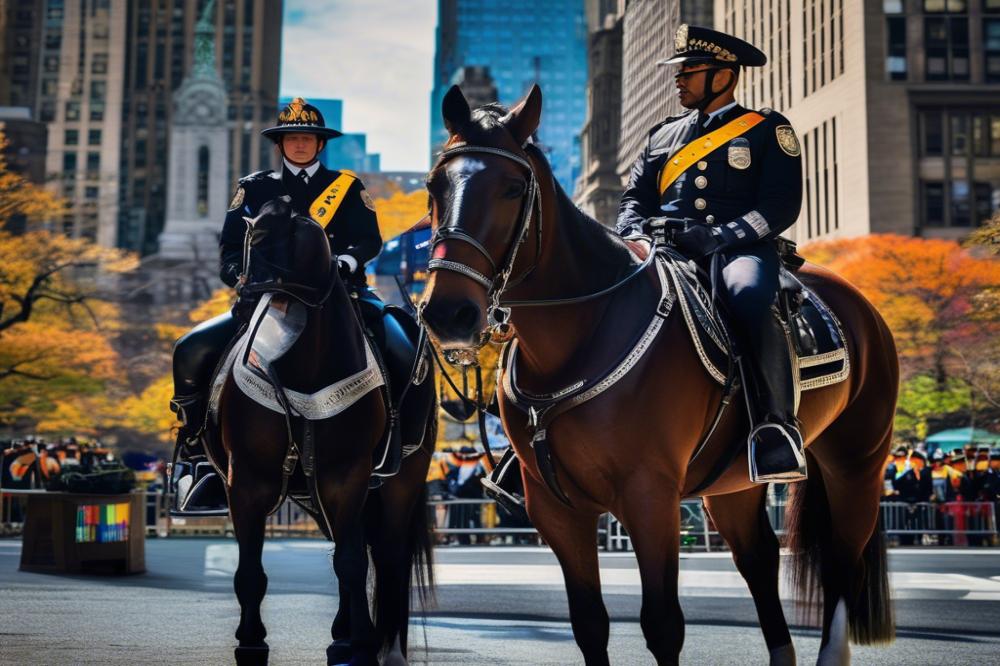The Essential Role of mounted police Horses in New York City
Urban settings present unique challenges for law enforcement. In this maze of streets and crowded sidewalks, police officers often need additional support. mounted police provide that support in a way that cars and bicycles cannot. Their presence brings a different kind of visibility and approachability to community policing.
In New York City, police horses play a crucial role. These magnificent animals do more than just look good on the streets; they are vital for maintaining public safety. People are naturally drawn to horses. The connection between the animal and the community can foster a sense of trust. This bond is essential in busy neighborhoods where people may feel disconnected from authority.
Community engagement is a key function of these horse patrols. Officers on horseback can interact with residents and visitors more easily than those in cars. They attend parades, festivals, and other local events. In these moments, they become more than just enforcers of the law; they transform into symbols of safety and support. This helps bridge the gap between the police force and the community.
Additionally, mounted police play a role in maintaining order during large gatherings. Horses have a unique ability to manage crowds. Their presence can deter potential troublemakers while reassuring the general public. The sight of a calm officer on horseback often inspires a sense of security. People feel safe knowing that a visible law enforcement presence is nearby.
Overall, the importance of police horses in New York City cannot be overstated. They support public safety, enhance community relations, and help create a feeling of safety among citizens. As cities continue to evolve, the essential role of mounted police may become even more significant in the years to come.
Mounted Police and Public Safety

Mounted officers play a vital role in enhancing safety in New York City. Their horses provide a height advantage that helps police monitor large crowds. This perspective is especially useful during events like parades or concerts. Officers on horseback can spot trouble before it escalates.
Crowd control during protests is another important function. Horses can help direct and manage groups of people more effectively. Their presence often calms tensions. This can make protests easier to handle for both law enforcement and participants. Horses also give officers a more approachable appearance in high-stress situations.
Building community trust is key to effective policing. Officers on horseback interact with residents and tourists more easily. Children often find the horses fascinating, leading to positive interactions. These moments can change the perception of police, bridging gaps and fostering understanding.
Visibility is enhanced when officers ride through neighborhoods and parks. People feel reassured seeing mounted police patrolling their areas. It creates a sense of safety that foot patrols might not achieve alone. This increased presence is especially important after crime spikes.
During special events, these officers blend accessibility with authority. Conversations happen naturally between the public and police. Such exchanges can lead to valuable information about local issues. Ultimately, the connection formed through these interactions is essential for community relations.
Historical Significance of Mounted Police in NYC

The origins of mounted law enforcement in New York City date back to the late 19th century. In 1858, the New York City Police Department established its first mounted unit. This move aimed to provide a visible and effective way to patrol the bustling streets. Horses were necessary because they allowed officers to cover more ground than walking alone.
Over time, the responsibilities of these officers changed. Initially, they acted mainly as deterrents to crime in public spaces. Today, their role has expanded. They participate in crowd control during events, promote community engagement, and serve as a bridge between the police and citizens. Officers on horseback often appear during parades, protests, and festivals, bringing a calming presence to sometimes tense situations.
The cultural impact of these horses and their riders is significant. Images of mounted police often grace films and television shows, symbolizing law and order. This representation shapes how the public views law enforcement. It brings back a sense of nostalgia to some while others see it as a testament to the city’s history. These majestic animals captivate both tourists and locals alike, becoming a recognizable part of the urban landscape.
Moreover, public perception has evolved along with societal views on policing. While some people admire the charm of officers riding horses, others question the effectiveness of mounted units. Discussions about policing methods highlight the complexities involved. These animals help create connections in a community, allowing conversations to unfold where they might not otherwise happen.
Ultimately, the historical significance of mounted patrols in New York City reflects broader trends in law enforcement and community interaction. The relationship between humans and horses in this context transcends mere utility; it embodies a unique bond built on trust, service, and the shared goal of safety.
Community Engagement Through Mounted Units
Mounted police play an important role in building connections with the community in New York City. Their presence brings a sense of safety and friendliness to crowded streets. People often feel more at ease when they see officers on horseback. Horses have a natural ability to attract attention, making them great conversation starters.
Participating in various events is a key aspect of their duties. Parades, festivals, and public gatherings all benefit from having these officers on horseback. At events like the St. Patrick’s Day Parade, mounted officers often delight the crowd. Families gather around to take pictures and chat with the riders. These interactions make police seem more approachable and less intimidating.
Interactions with citizens can lead to positive outcomes. Kids especially enjoy meeting the horses and learning about them. Officers can share information on horse care and training, promoting curiosity and respect for the animals. Such engagements help bridge gaps between police and community members.
Mounted police often patrol parks and neighborhoods, increasing visibility in public spaces. Their presence encourages people to feel safe while enjoying outdoor activities. Communities often express gratitude for this approachable form of law enforcement. When people see officers interacting in their neighborhoods, it reduces barriers and creates a sense of unity.
This engagement is not one-sided. Officers also gain valuable insights from community members. Conversations while patrolling or attending events allow police to hear local concerns. Understanding issues faced by neighborhoods helps officers respond more effectively. Collaboration is essential for ensuring public safety.
Tourism and the Mounted Police Experience
Tourists flock to New York City for many reasons, and one captivating aspect is the presence of police units on horseback. People often stop to take photos with these magnificent animals. Children especially are drawn to the horses, fascinated by their size and gentle demeanor. This unique interaction creates lasting memories for visitors.
Experiences with the horses go beyond simple selfies. Many guests appreciate the chance to chat with officers while learning about their horses. The bond between the police and their animals fosters a deep connection. Such moments highlight the friendly side of this busy city. Giving tips on how to approach a horse also helps visitors feel more comfortable and engaged.
Moreover, the mounted patrol contributes to a sense of safety. When people see officers on horseback, they often feel reassured. This presence promotes a welcoming atmosphere, fostering a sense of belonging. The image of New York City is enhanced when it appears friendly and accessible. Tourists leave with a positive impression, which encourages them to share their experiences. This ripple effect can inspire others to visit and explore.
Equestrian Training and Animal Welfare
Training police horses involves a series of carefully structured steps. From a young age, these animals learn basic commands and perform various exercises. Experienced trainers guide them through different environments to build their confidence. Horses are exposed to traffic, loud noises, and large crowds. This helps them stay calm in the busy streets of New York City. Regular drills and practice sessions reinforce their skills and obedience.
Animal welfare is crucial within mounted units. Proper care extends beyond training. Horses require a balanced diet and adequate exercise to maintain their health. Farriers and veterinarians play vital roles in ensuring that the animals are fit for duty. Routine check-ups help identify any potential issues before they become serious problems. It is essential for the horses to be in peak condition.
Best practices in handling horses focus on creating a positive experience for both animals and handlers. Gentle techniques are often more effective than harsh methods. Trainers advocate for patience and understanding when interacting with horses. Regular grooming sessions not only keep the horses clean but also build trust between the animals and their human partners. As a result, these interactions promote a strong bond that benefits both parties.
In the mounted police unit, the horses contribute significantly to community engagement. Police officers on horseback often connect with the public in a way that squad cars cannot. This visibility creates opportunities for dialogue and enhances community relations. However, the safety and well-being of the horses remain at the forefront of all activities.
Challenges and Future of Mounted Police Units
Urban environments present several challenges for police horses. Noise and crowded streets can be stressful for them. The presence of many people, cars, and other distractions often leads to unpredictable situations. Moreover, the limited space for training and exercise is a concern. Horses need room to move and train effectively. Finding suitable areas in a busy city can be difficult.
The future role of these animals in law enforcement seems to hinge on adapting to new norms. Officers may find stronger community ties through visible interactions with the public. Walks and parades could foster positive feelings among citizens. This visibility helps to build trust. People often feel more comfortable approaching officers on horseback than those in cars.
Changes in community relations are essential for progress. More outreach programs could enhance communication between officers and residents. Educational workshops might explain the importance of mounted units. Animal welfare is another priority to consider. Horses require proper care, feeding, and rest. Implementing better animal welfare practices ensures their health and abilities are maintained.
Future developments may also include technological advancements. New tools can aid in monitoring a horse’s health. Apps may help officers keep track of riding patterns and well-being. Such innovations could lead to improved training protocols. Knowledge sharing among units across the nation can lead to overall better standards.
While challenges are present today, so are opportunities. With careful planning and a focus on community, the potential for mounted police horses remains bright. Listening to public concerns while providing the necessary support for these animals is essential. It is a balancing act that requires attention and dedication.
Wrapping Up
In New York City, police horses serve vital roles that go beyond traditional law enforcement. These majestic animals contribute significantly to public safety. Their presence in busy streets and crowded parks helps to deter crime and provide a sense of security for residents and visitors alike. Many people feel reassured when they see an officer patrolling on horseback.
Community engagement is another critical aspect of their work. Officers and their horses often participate in local events, festivals, and parades. This builds trust and connections between the police and the neighborhoods they serve. Interactions with the community allow residents to approach the officers comfortably, which fosters understanding and cooperation.
Cultural heritage also plays a crucial role in emphasizing their importance. Mounted units have been a part of the city’s identity for many years, representing a unique blend of tradition and modern policing. These horses have witnessed countless events in the city’s history, standing as symbols of strength and stability over generations.
It’s essential to recognize the value that police horses bring to New York City. Their contributions are multi-faceted and critical to maintaining a safe and welcoming environment. Supporting mounted police units is vital for enhancing both safety efforts and community relationships.
In conclusion, we should appreciate the significant service provided by these animals and their officers. Acknowledging their role encourages continued support for their presence on the streets. As active members of the community, the mounted police horses deserve attention and respect for the meaningful impact they have on all of us.



